DVD was once popular for storing or streaming movies and other media types on discs. But even now, it is still relevant for many people since you can burn homemade films, songs, and other files to a disc. To effectively burn videos with the right resolution, here are the things to know about the DVD resolution.

- Part 1. What is DVD Resolution
- Part 2. What is The Maximum DVD Resolution for SD and HD
- Part 3. Blu-ray VS DVD Resolution VS 4K
- Part 4. How to Change DVD Resolution
- Part 5. FAQs about DVD Resolution?
Part 1. What is DVD Resolution
DVD resolution is about the number of pixels displayed on your screen. This expressed the width and height of the visual. When DVD was released in 1997, the video resolution was 720 × 480 or 480i. It is the standard resolution format for older DVDs and CDs, but right now, there are more resolutions supported in DVDs, depending on the distribution. For example, NTSC DVD resolution is commonly 720×480 or 480p. On the other hand, the PAL DVD resolution is 720x576 or 576i/576p.
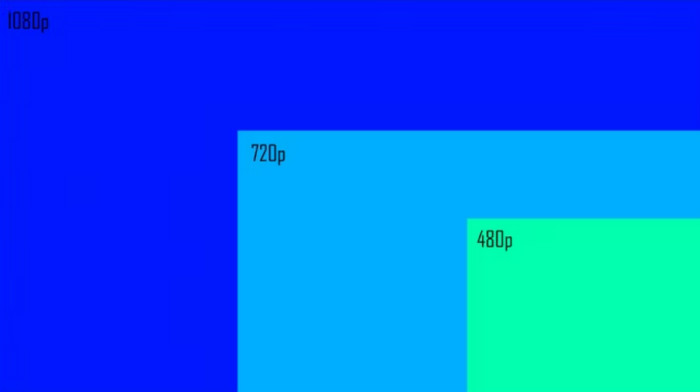
Part 2. What is The Maximum DVD Resolution for SD and HD
As we go further, the new resolutions you will find on the modern DVD resolution are based on SD and HD. For SD, the video resolution only maximizes at 480p (NTSC) and 576p (PAL).
Meanwhile, HD has two types of video resolution: HD DVD with a maximum resolution of 1080 pixels and Blu-ray with full HD 1080p resolution. While these are given, the resolution still varies depending on the aspect ratio of both SD and HD, but they are mostly common with 4:3 and 16:9 ratios.
Part 3. Blu-ray VS DVD Resolution VS 4K
| Blu-ray | DVD | 4K | |
| Video Quality | Better | Good (quality can be reduced when played on a larger screen) | Excellent |
| Storage | 25GB to 50GB | 4.7GB to 8.7GB | 66GB to 100GB |
| Compatibility | It requires a Blu-ray player or a compatible drive to play videos | Widely compatible with computers, media players, and gaming consoles | High-end computers and smart TVs |
| Special Features | Support multiple audio tracks, subtitles, extra content, interactive menus, and internet connectivity | Multiple languages supported, menu navigation, and more compatible devices | HDR that enhances the contrast and color of the image |
As mentioned, DVD resolution indicates the number of pixels on the screen, but DVD is not the only one with this. The creation of Blu-ray allowed movie enthusiasts and filmmakers to go further than the standard resolutions, and it eventually made way for 4K. In this section, we will differentiate DVD, Blu-ray, and 4K in terms of resolution, quality, capacity, and so on.
DVD
Regarding resolution, DVD has the standard resolution of 480i for NTSC and 576p for PAL. While it has a decent video quality, the two DVD resolutions lack clarity compared to modern resolutions. Its capacity can only hold 4.7GB of data for a single-layer disc, but it can maximize up to 8.8GB for a dual-layer disc. For the compression, DVD uses MPEG-2 compression, which can lead to quality loss compared to new codecs.
Blu-ray
Blu-ray can have up to 1080p resolution and is regarded as Full HD. It was introduced when Blu-ray was developed, so it is impossible to have a DVD resolution of 1080p. On the other hand, Blu-ray improves the clarity of the visual compared to DVD, providing a capacity of up to 25GB of data for single-layer discs and 50GB of data for dual-layer discs. It uses MPEG-4 AVC or H.264 as codecs, so the compression only builds smaller file sizes while maintaining the sharpness and quality of the video.
Check the differences between DVD and Blu-ray here.
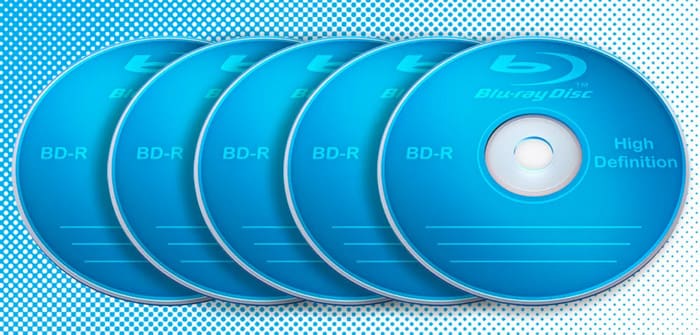
4K
As of today, 4K is the highest resolution that is usually attainable for consumers. It is also known as 4K Ultra HD, and it can display up to 3840×2160 pixels on the screen. This is four times the number of pixels provided by Full HD, which is 1920×1080 pixels. As mentioned, 4K is the highest attainable resolution, that is because you can use it for home viewing with the quality of outstanding clarity, vibrant colors, and enhanced contrast. When we talk about its capacity, it reaches up to 100GB of data, allowing you to upscale everything, including audio formats like Dolby Atmos and DTS X. The compression technology relies on HEVC or H.265 since this is the most advanced codec with the superior compression algorithm.
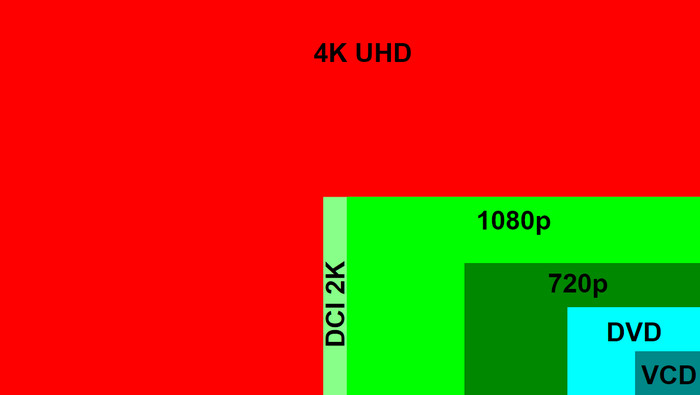
Part 4. How to Change DVD Resolution
Is it possible to upscale your DVD resolution to 720p, 1080p, or 4K? Definitely, yes. With the help of DVD Ripper, you can rip and convert the videos from your discs and obtain an enhanced resolution up to 4K. The desktop tool has advanced technology that processes MKV, MP4, MOV, and other video types and changes the output settings, including the resolution, format, codecs, and so on. More than this, DVD Ripper offers device presets to convert videos to iPhone, Apple TV, and other devices, so you can watch high-res videos on a compatible screen.
- Support DVD 5, DVD 9, DVD-R, DVD+R, DVD+RW, and other types.
- Fast-speed ripping and conversion process, even for multiple files.
- Edit media files with the built-in trimmer, splitter, and editor.
- Change the resolution to HD DVD resolution without distortion.
Free Download
For Windows
Secure Download
Free Download
for macOS
Secure Download
Step 1.Download and install DVD Ripper on Windows or Mac. Once done, run the software and load your disc to the optical drive. Click the Load Disc button and select the videos you want to rip and convert.
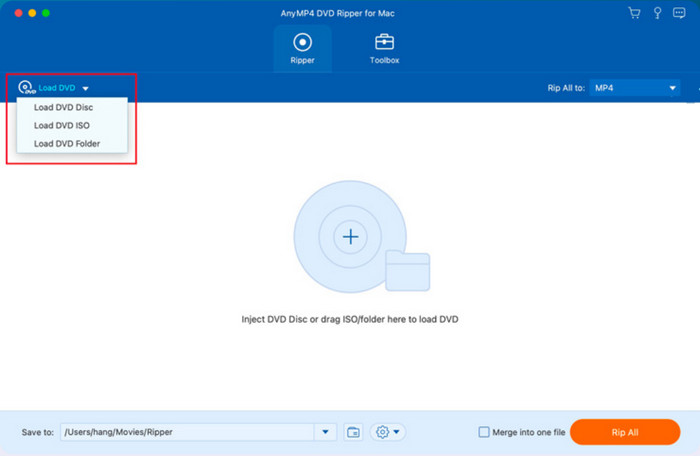
Step 2.Begin by setting the profile of the video. Go to the Profile menu and choose the preset like Apple TV, Samsung, etc. Then, go to the Video Settings menu and edit the output settings. Open the Resolution dropdown list and pick 1080p or 4K to change the output resolution. Proceed to configure the other settings, then click the OK button to apply.
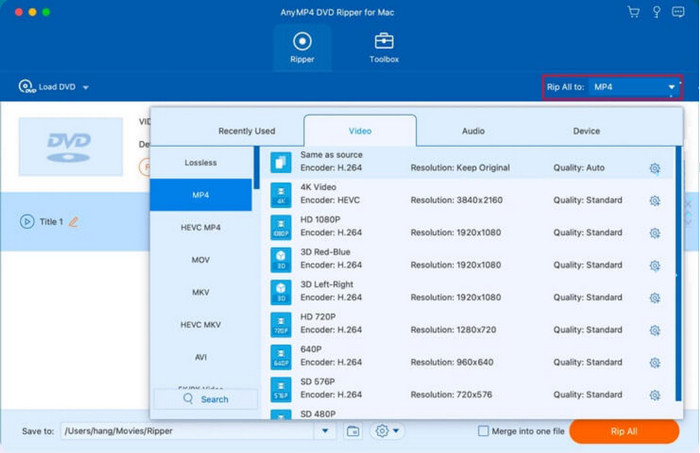
Step 3.Set the destination by clicking the Browse button at the bottom part of the interface. This will direct the ripped files to the chosen folder. Finally, click the Rip All button to process and change the DVD resolution quality.
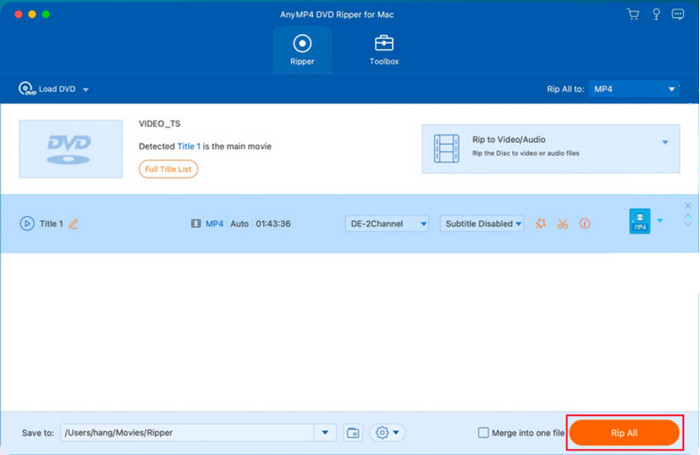
In just 3 steps, DVD Ripper can help you achieve the best results in changing the DVD resolution. Try the free version on Windows and Mac, or buy the pro version at an affordable price.
Part 5. FAQs about DVD Resolution?
-
What is widescreen DVD resolution?
It is a DVD video that displays either 4:3 or 16:9 widescreen in aspect ratio. These types of aspect ratios are commonly used for NTSC and PAL formats.
-
What is DVD resolution in pixels?
You can easily distinguish the DVD resolution 576p with 720×576 pixels and the DVD resolution 480p with 720×480.
-
What is DVD resolution output?
The output depends on whether the DVD's resolution format is NTSC or PAL. DVD resolution can be 480p or 576p, and these are commonly the standard resolutions.
Wrapping up
After discussing DVD resolution, you have learned that it has 480p and 576p as standard resolutions. We also compared DVDs to resolutions like Blu-ray and 4K to distinguish which can deliver the best video streaming. Although 576p is insufficient, DVD Ripper can rip and convert DVD resolution to 720p, 1080p, and even 4K. Click the Download button to rip your DVD collections and enjoy a high-res video playback.
More from Blu-ray Master
- DVD Types: How to Choose and Pick up the Best One
- About DVD+R and DVD-R: Qualities and Functions Explained
- DVD Regions: List of DVD Regions and How to Bypass Them
- Various Types of DVD Capacity and Formats to Observe
- 9 Different DIY DVD Storage Ideas for Your DVD Collection
- How Long Does DVD Last: Know Lifespan and Proper Storage

